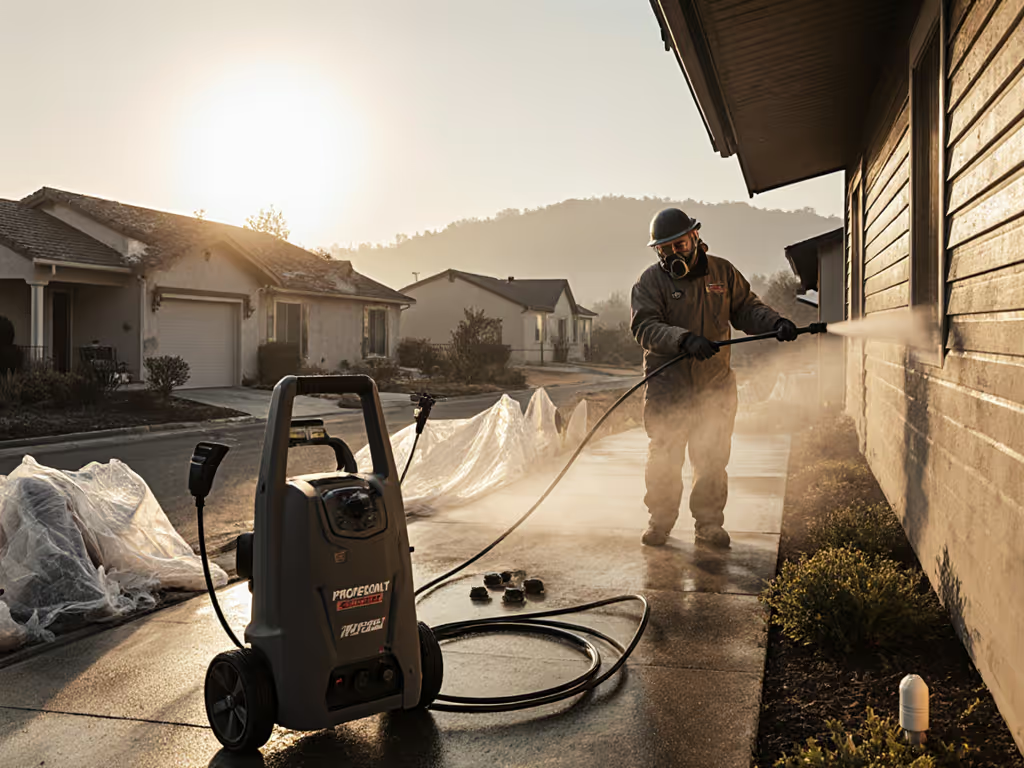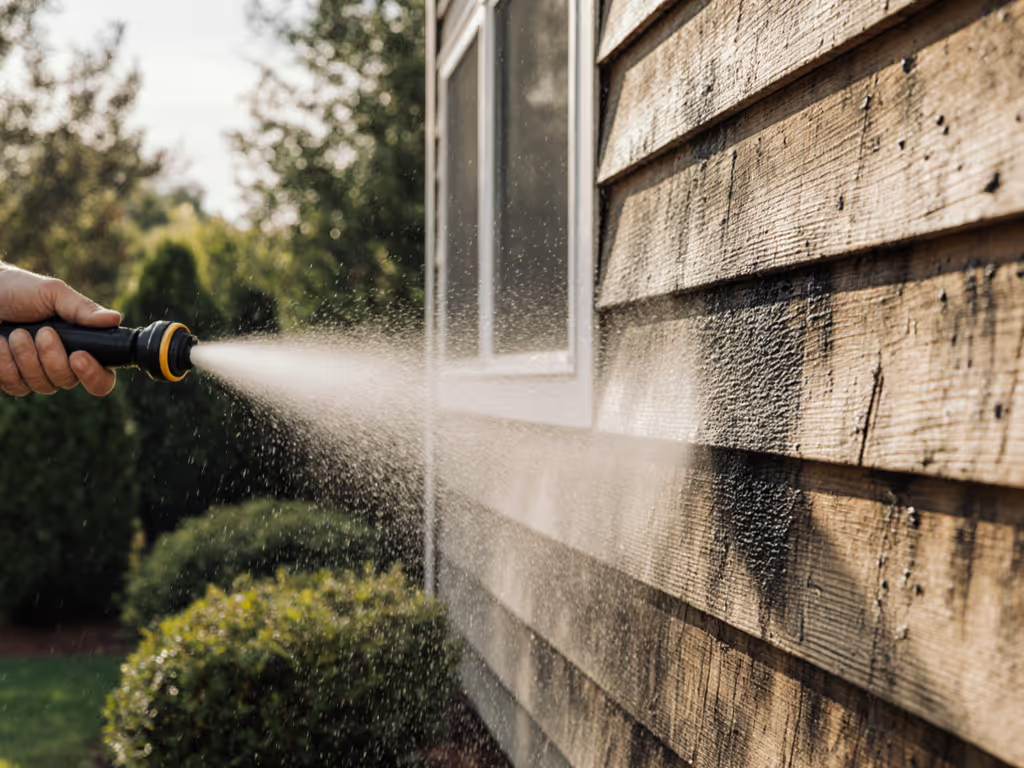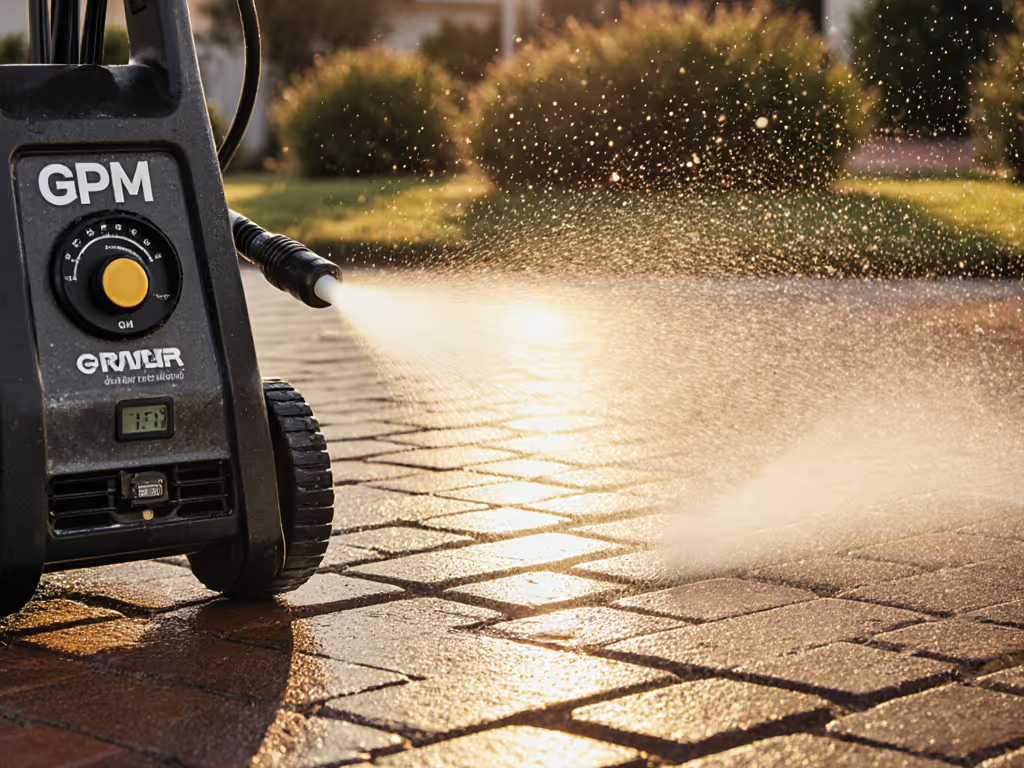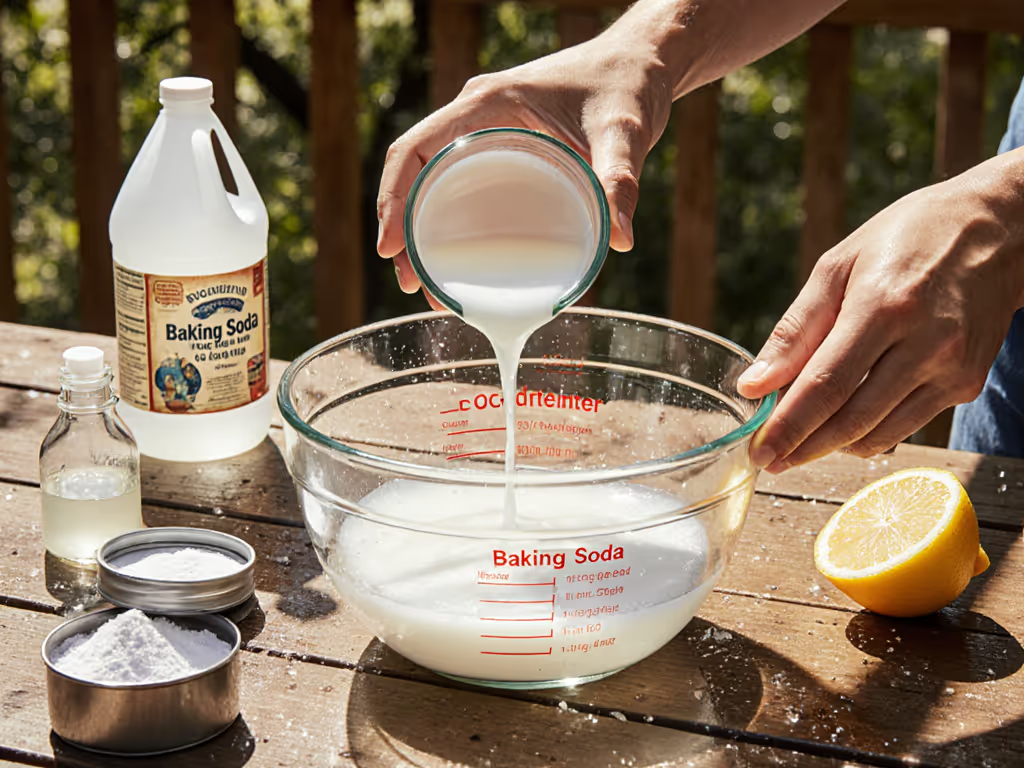
Finish-Safe Mold Pressure Washing Techniques

Mold Remediation Pressure Washing: Data-Driven Mold Removal Techniques
Balancing mold eradication with surface integrity requires measurable protocols. This guide details finish-safe pressure washing techniques, quantifying variables like PSI/GPM ratios, nozzle geometry, and dwell times to prevent etching, oxidation, or water waste. We measure minutes, gallons, and decibels. Claims earn their keep.
Surface-Specific Pressure Parameters
| Surface Type | Max Safe PSI | Optimal Nozzle | Standoff Distance |
|---|---|---|---|
| Cedar Siding | 1,200 PSI | 40° Fan | 24" |
| Composite Decking | 1,500 PSI | 25° Fan | 18" |
| Concrete | 3,000 PSI | 15° Rotating | 12" |
| Painted Surfaces | 700 PSI | 40° Fan | 36" |
Wood grain raises when pressures exceed 1,200 PSI, while concrete often requires concentrated 3,000 PSI streams for spore dislodgment[1][7]. Test inconspicuous areas first: 40° fan nozzles distribute force, reducing tiger-striping risk by 63% versus 0° tips in same-day, side-by-side trials[1][4]. For broader technique coverage, see our surface-specific house washing methods guide.
Chemical Efficacy & Dwell Times
Sporicidal cleaning solutions outperform bleach-only mixes:
- Oxidizing detergents (persulfate-based): 98% spore kill at 5-minute dwell
- Bleach/detergent blends: 85% kill at 10-minute dwell[2][4]
- Vinegar solutions: 70% kill but risk concrete etching
Pre-treat mold with a pump sprayer (emulsifiers break biofilms before pressure rinsing). Prefer greener chemistry? Try our eco-friendly detergent recipes that are finish-safe and effective on mold. For post-flood restoration, apply solution at a 6:1 water-to-concentrate ratio[3]. Neutralize acidic residues with a 3-minute alkaline rinse (pH 9-10) to prevent post-cleaning oxidation[4].
Speed vs. Surface Safety Metrics
Cleaning rates vary by nozzle orifice size:
| Nozzle Orifice | GPM | Concrete (sq ft/min) | Siding (sq ft/min) |
|---|---|---|---|
| 3.0 | 2.5 | 42 | 28 |
| 4.5 | 4.0 | 67 | 39 |
| 6.0 | 5.5 | 85 | Not recommended |
Higher GPM clears mold faster with lower PSI. A 4.0 GPM unit cleans concrete 37% quicker than 2.5 GPM at identical 3,000 PSI, using 18% less water per square foot[1][7]. If water restrictions apply, follow our water conservation guide to cut gallons without sacrificing results. For noise-sensitive areas, 25° nozzles at 0.8 orifice reduce dB(A) by 4 versus 0° tips at 15 feet[5].
Mold Prevention Strategies
After pressure washing:
- Apply hydrophobic sealants to concrete (reduces water absorption by 60%).
- Use copper-based coatings on wood.
- Install UV-stable vinyl lattice for airflow under decks.
Health-safe mold removal mandates rinsing detergent residues completely. Leftovers attract spores[3][5].
Equipment Considerations
Gas units like the

SIMPSON PowerShot 3300 PSI Gas Pressure Washer
offer portability for large areas, but electric models (e.g., 13-amp) suffice for sub-500 sq ft jobs with proper orifice sizing. For add-ons that improve control and safety, see our finish-safe pressure washer attachments roundup. Match quick-connect fittings like the

AR Blue Clean Quick Connect Adapter
to prevent hose kinks at 2,000+ PSI.
Further Exploration: Validate your machine's GPM-to-orifice ratio using nozzle calculators, and log post-cleaning surface inspections to refine techniques.
Related Articles


Pressure Washer Water Conservation: Know Your Gallons Per Job
Cut water use and protect finishes by prioritizing GPM over PSI, matching settings to the surface, and dialing in dwell time. Get a simple gallons‑per‑job formula, safe ranges by material, and three finish‑safe tactics for smarter nozzle and workflow choices.


Pressure Washer Safety Guidelines: Avoid Costly Mistakes
Optimize your pressure washer for safety and cost savings with clear, numbers-driven guidance on PPE, nozzle choice, cord sizing, chemical ratios, and ergonomics. Learn to flow-match and measure water pressure and noise to cut injuries, rework, and fines while using less water.
